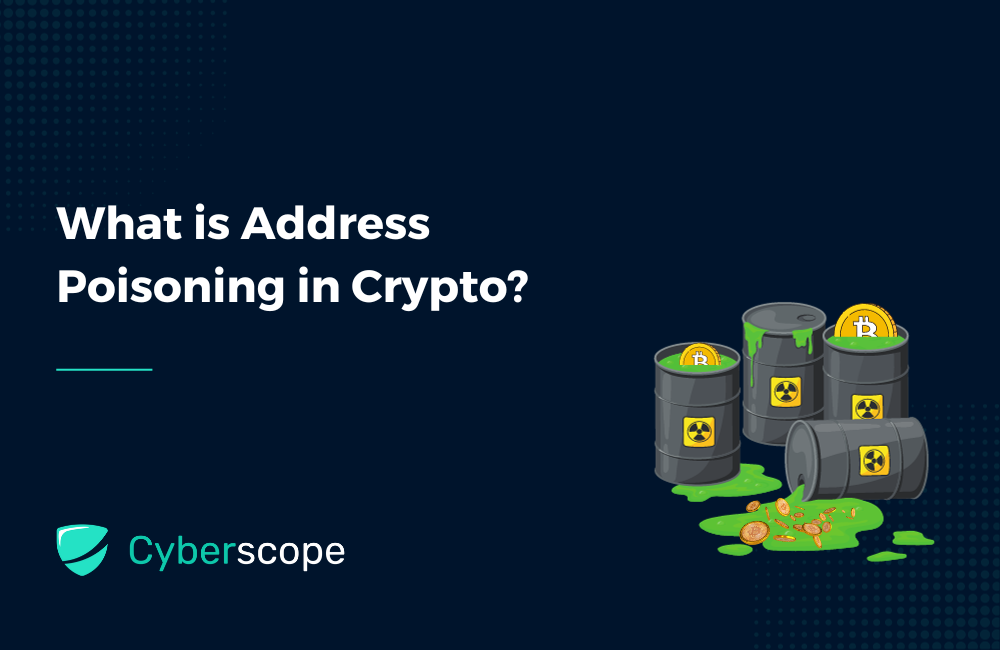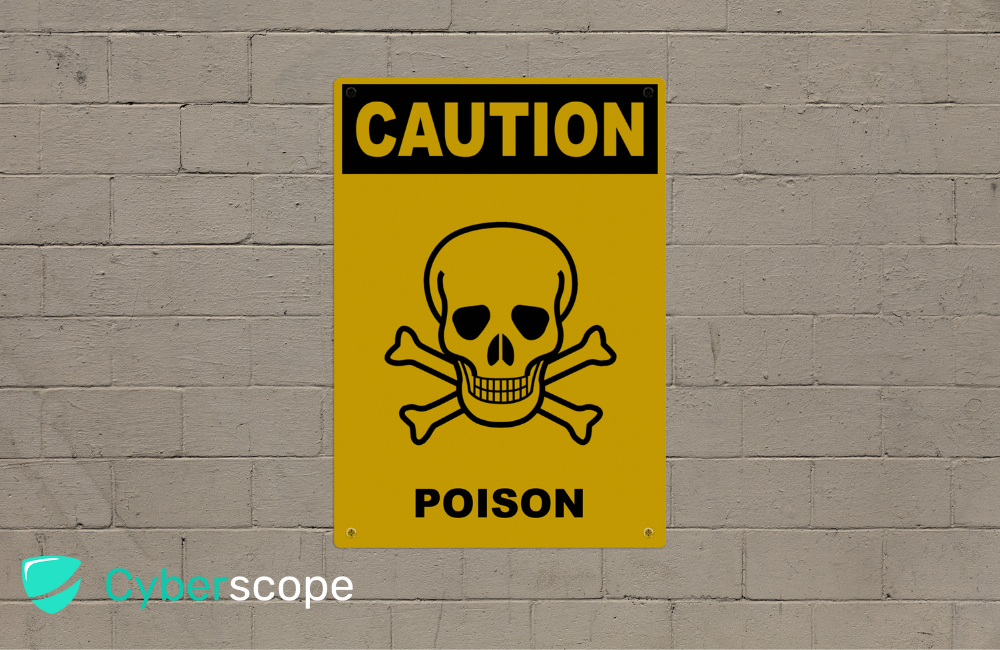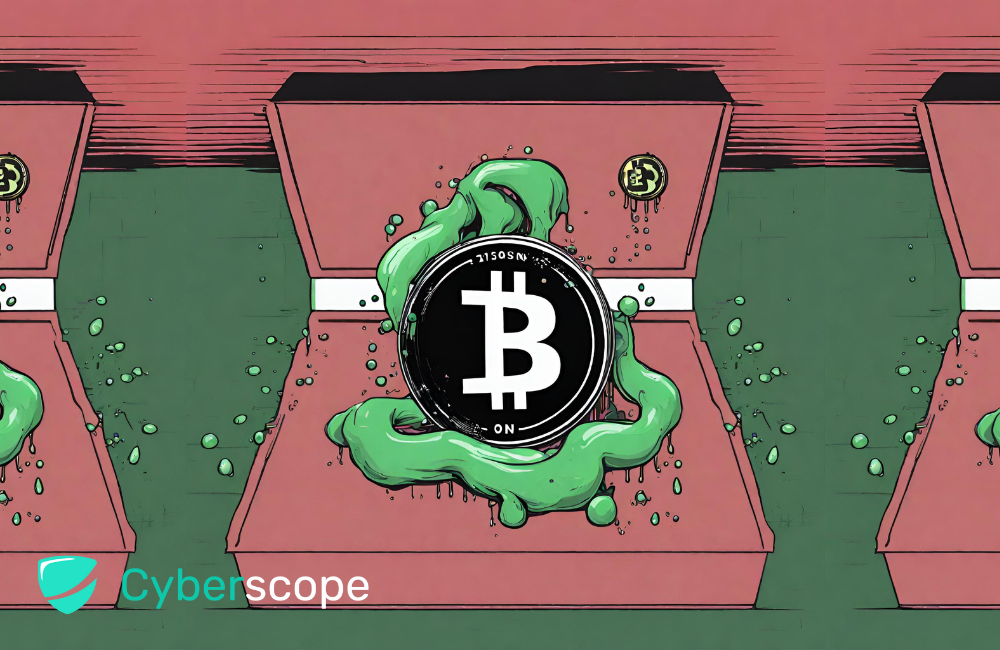

What is Address Poisoning in Crypto?

Introduction
In the dynamic realm of cryptocurrencies, security is a top priority. A rising threat known as "Address Poisoning" has gained attention lately. Unlike smart contract hacks, address poisoning is a cyberattack aiming to mislead cryptocurrency users into sending funds to the wrong place. This article explores what address poisoning entails, the tactics involved, and how to protect yourself from falling prey to this scheme.

Getting to Know Address Poisoning
Address poisoning is a sneaky strategy used by cybercriminals to deceive cryptocurrency users and snatch their digital assets. It's a straightforward concept: the attackers aim to create confusion to manipulate transactions and make users send their cryptocurrencies to the attacker's wallet.
Common Types of Address Poisoning Attacks
Address poisoning attacks come in different forms, but we'll focus on two common methods used by these malicious actors:

Method 1: Fake Contracts
In this approach, the attacker creates a smart contract that sends tokens with zero amounts to an address that closely resembles the victim's. When the victim sees this transaction for the first time, it might not raise any red flags. However, the real danger emerges when the victim intends to make a legitimate transfer. Instead of copying the correct recipient's address, they mistakenly copy the attacker's address from the transaction history.
These attackers often design their fake addresses to look very similar to the victim's, making it hard to spot the difference. Wallets and explorers usually show only the first and last few characters of an address for brevity, which is where the deception begins.
In some variations of this scam, the attacker may use a counterfeit token contract to transfer a substantial number of tokens to the target. These are typically fake versions of well-known tokens like USDT or USDC. The attacker then performs a transaction that makes it seem like the victim's address is sending 0 tokens to the receiver – the attacker's address. This manipulation raises the odds that the victim will unknowingly copy the wrong address, believing it's a legitimate transaction.
Although some block explorers hide these deceptive transactions by default, many in-app transaction logs and explorers still display these transactions, making it crucial to stay cautious.
Method 2: Breadcrumbing
In the second method, the attacker creates an address that closely resembles the victim's. They send small amounts of cryptocurrency to the victim's address, hoping that the victim will check their wallet's balance on a block explorer and find the attacker's address in the transaction history.
The attacker's hope is that when the victim sees a transaction involving a token they frequently interact with, they might copy the recipient address, believing it's their own, and subsequently send funds to that address. For these attackers, it's a numbers game, and they're willing to spend money on transaction fees to carry out their attacks.
These address-poisoning attacks are often hard to detect because they appear legitimate and may not trigger any warnings. However, users can take steps to protect themselves from such deceptive tactics.

How to Guard Against Address Poisoning Attacks
While you can't completely shield yourself from being a target of an address poisoning attack, you can empower yourself with knowledge and take precautions to minimize the risk. Here are some steps you can take to stay safe:
1. Stay Vigilant:
Always double-check the recipient's address before initiating any cryptocurrency transaction. A simple moment of careful review can save you from falling victim to these malicious schemes.
2. Set Up Alerts:
Several tools allow you to set up alerts that notify you when your address is involved in transactions or interacts with specific smart contracts. These alerts can help you confirm your legitimate transactions and ignore anything suspicious.
3. Create a Contact List:
Most major cryptocurrency wallets now offer the option to create a contact list or address book. By adding trusted addresses to this list, you can significantly reduce the risk of sending funds to the wrong place.
4. Rely on Trusted Sources:
When obtaining a recipient's address, ensure it comes from a trusted and verified source. Avoid clicking on links or using addresses obtained from unverified or suspicious sources. Double-check any address you receive, even if it appears in your transaction history.
5. Name Service Addresses:
Consider using name service addresses, such as those provided by the Ethereum Name Service (ENS) or BSC Name Service (BNS). These addresses are much harder to duplicate and can provide an added layer of protection.
6. Filter Transactions:
Some Web3 wallets allow you to filter transactions by contract address or whitelist specific contract addresses. This can be particularly useful to ensure you're interacting with official contracts and not falling for phishing attempts.

Conclusion
Address poisoning attacks are a genuine and evolving threat in the world of cryptocurrencies. By staying informed and taking these simple yet effective precautions, you can significantly reduce the risk of falling victim to these deceptive tactics. Your digital assets are valuable, and it's crucial to protect them in this ever-changing digital landscape. Stay vigilant, stay safe, and keep your crypto secure.

.jpg%3Falt%3Dmedia&w=640&q=75)

